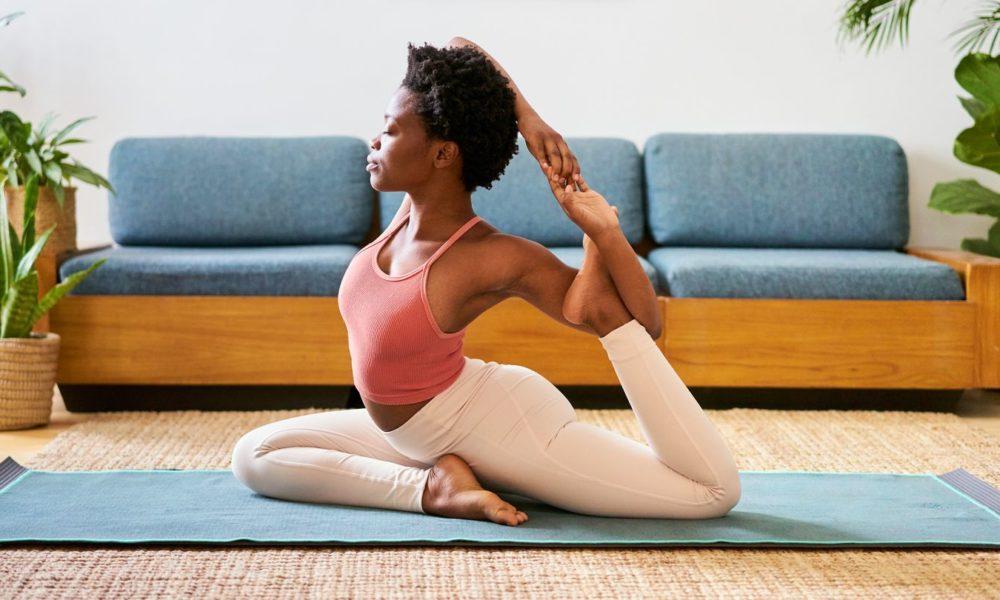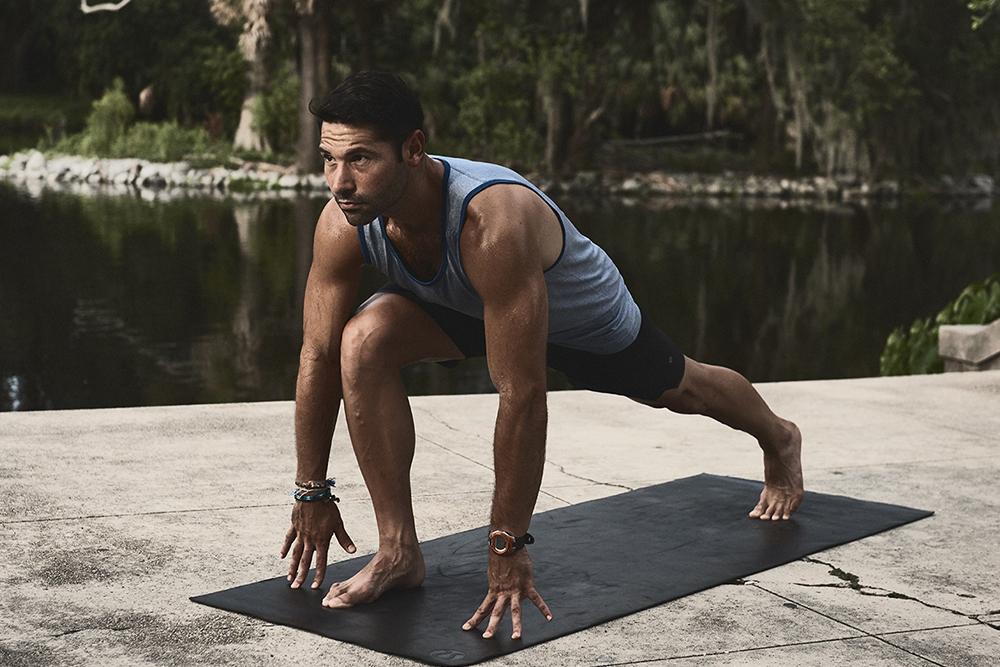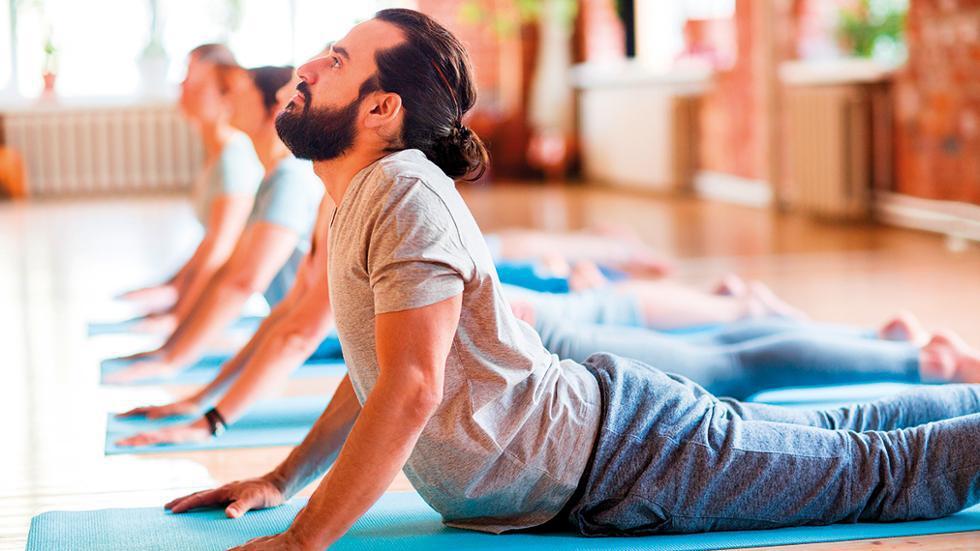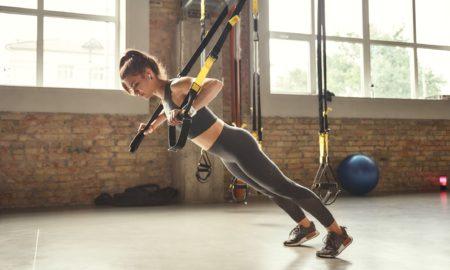

Want a healthy body and mind? Try yoga.
It is an ancient practice that aims to bring peace, increase strength and flexibility and improve posture and balance. Yoga can also help manage stress levels and improve physical fitness, stability, and weight loss.
Yoga has been practiced for thousands of years and is one of the most popular forms of exercise in the United States today. As of 2016, the number of Americans practicing yoga had increased by 50%, from 20.4 million in 2012 to 36 million.
The practice of yoga has become so popular that health facilities and gyms have created yoga studios where they hold classes. Yoga is also making great strides among professional bodybuilders, weightlifters, and athletes—who are turning to it to improve performance and overcome various injuries. According to research, “the yoga and yoga accessories market has the potential to grow by $830 million from 2020-2024.
Let’s see why many people, including athletes and bodybuilders, indulge in yoga practices. Here we will take a look at the benefits of yoga, the types of yoga, and the disadvantages.
Benefits of Yoga for Bodybuilders
Yoga is an excellent way for bodybuilders to stay fit and healthy because it helps build muscle strength without lifting weights or straining their joints.
Also, you can modify yoga poses to meet your needs depending on your fitness level. Benefits include:
Improved Flexibility
Yoga improves flexibility by stretching and strengthening muscles and tendons in critical areas of the body that are often tight due to regular lifting — hamstrings, quadriceps, chest, and shoulders. This helps prevent injury when heavy weightlifting or doing other strenuous activities like running or cycling.
Weight Loss
Yoga has been shown to help people lose weight by increasing muscle mass and reducing fat storage. The breathing techniques used in yoga can also increase metabolism and burn calories.
Improved Oxygen Circulation
Yoga improves circulation by increasing blood flow throughout the body. This prevents cardiovascular diseases like heart disease and stroke by improving oxygen flow to the heart muscle and brain tissue.
A stronger heart means an increased ability to pump more blood with less effort required from the heart muscles. As a result, you will be able to work out with less strain on your heart when you’re doing other forms of exercise or walking.
Improved Physical Fitness
Yoga builds strength and flexibility throughout your entire body. You’ll gain control over your muscles while improving your posture and balance.
Your breathing becomes more profound and more efficient, which helps with blood pressure regulation (which leads to a lower resting heart rate). Yoga also improves lung capacity and enhances overall cardiovascular health. All of these make you physically fit as a bodybuilder.
Improved Mental Health
To lift weight or do other strength training exercises, you need to be focused, and that’s where yoga comes to help you. Yoga improves mental clarity by allowing you to focus.
By focusing on breathing in each pose, you’re able to quiet your mind so you can concentrate on one task or feel your body if there is any pain.
Improves Balance
Poses like downward-facing dog, the plank pose, and warrior II can help improve balance by strengthening ankles and calves. These poses also improve posture by lengthening muscles in the back of the body that may become short from regular lifting or sitting at a desk all day.
Better Posture
Regular yoga practice improves posture by holding postures for extended periods and strengthening muscles. Good posture helps with muscle imbalances and relieves neck, shoulders, and back tension.
It also makes it easier for the lungs to work efficiently when breathing deeply during exercises like pranayama (breathing exercise).

Stretches Muscles
Yoga offers an excellent opportunity to stretch muscles that may remain tight because people don’t try enough. Stretching muscles increases blood flow, improving flexibility and reducing soreness after a workout or any physical activity.
Yoga Improves Digestion
Yoga improves digestion because it stimulates blood flow to the digestive organs, increasing their ability to digest food properly.
Improved digestion also enhances the elimination of waste through urination and bowel movements. Improved digestion also relieves bloating, constipation, or diarrhea symptoms by helping eliminate waste products from the body more efficiently.
Benefits of Yoga for Stress
Apart from yoga’s physical benefits, it also has many benefits for your mind. The benefits include:
Relieve Stress
Yoga reduces stress levels by engaging both the mind and body. This improves overall health and reduces stress-related symptoms such as anxiety, depression, irritability, and fatigue.
Yoga also helps you relax by increasing blood flow to the brain while simultaneously stimulating the parasympathetic nervous system, which triggers relaxation responses throughout the body. As a result, you feel more relaxed physically while also helping you manage emotional responses better.
Improves Focus
Yoga reduces stress by encouraging you to focus on your breath, which slows down during stress and relaxes your mind and body.
Yoga also provides an outlet for pent-up emotions like anger or fear that may contribute to stress levels. Releasing pent-up emotions through deep breathing exercises, movement, and meditation helps reduce feelings of anxiety and depression associated with chronic stress.
Relieve Pain
Regular participation in yoga classes relieves physical tension from tight muscles caused by stressors like sitting at a desk all day or doing intense exercises at the gym.
Reduces Anxiety
Yoga effectively reduces anxiety levels in people suffering from depression or anxiety disorders like panic attacks or obsessive-compulsive disorder (OCD). It helps them get into a state of calmness through meditation and breathing exercises which reduce anxiety levels.
Yoga Improves Your Mood and Sleep Quality
If you have trouble sleeping at night or suffer from insomnia, practicing yoga for 15 minutes before bedtime can help you fall asleep faster and sleep more soundly.
The deep breathing exercises involved in some styles of yoga help you relax your nervous system by reducing cortisol levels, which relieve tension and anxiety that may keep you awake.
Regular yoga practice also increases melatonin production, a hormone that helps regulate circadian rhythms and improves sleep quality.

Types of Yoga
The top types of yoga include:
Hot Yoga (Bikram)
Hot yoga is a type of yoga practiced in a heated room, with the room temperature at 105 degrees Fahrenheit and 40 percent humidity.
It is often practiced in a heated studio or gym, and the classes typically last 90 minutes, but they may be longer depending on the class style being taught.
The heat helps to increase flexibility, range of motion and also aids detoxification. The heat loosens your muscles and makes it easier to go into deeper stretches with less effort.
Hatha Yoga (Normal)
Hatha yoga is one of the most popular types of yoga practiced today. Hatha yoga focuses on strengthening your core muscles and stretching your body through poses like the Downward-Facing Dog pose, Triangle Pose (Trikonasana), and breathing techniques (pranayama) to stimulate the flow of energy through the body.
Iyengar Yoga
Iyengar yoga was developed by B.K.S Iyengar. It emphasizes alignment in poses and how to hold them correctly; you can use props such as blocks, straps, and blankets to help achieve proper alignment.
Kundalini Yoga
This form of yoga incorporates elements from Tantra and meditation into its practice. It emphasizes awakening the kundalini energy — believed to lie dormant at the base of your spine — through breath work, meditation, and chanting mantras.
Ashtanga Yoga
This type of yoga involves doing a series of poses in a specific order and is often known as power yoga. Although it’s a vigorous workout, it can help improve flexibility and strength.
Restorative Yoga
Restorative yoga uses props such as blocks and bolsters to help you relax into supported poses that help relieve stress on your muscles and joints while allowing them time to rest.
Hot Yoga Vs. Normal Yoga
The table below shows the difference between hot and normal yoga:
| Hot Yoga (Bikram) | Normal Yoga (Hatha) |
|---|---|
| Hot yoga combines poses, breathing, and meditation in a room heated to approximately 105 °F. | Regular yoga is a type of yoga that focuses on stretching, and breathing exercises at a room temperature of from 80 °F to 100 °F. |
| Hot yoga classes usually include more focus on flexibility, detoxification, and blood circulation | Focus more on flexibility and core |
| Hot yoga session can be 90 min | Classes are typically shorter: 30 minutes to 1 hour |
| Must be well-conditioned due to the temperature and time of class | Regular yoga more suitable for anyone to try |
Best Yoga Poses
The best yoga poses are the ones that you should practice daily. These poses help you to keep your body healthy and fit. Here are some of the best yoga poses you can do at home or the gym:
- Forward bend
- Extended side angle
- Tree pose
- Plank pose
- Downward facing dog pose
- Child’s pose
- Cobra pose
- Warrior 2 pose
- Triangle pose
- Seated spinal twist
Advantages Vs. Disadvantages of Yoga
| Advantages (Pros) | Disadvantages(Cons) |
|---|---|
| Yoga improves blood circulation | It can be dangerous for people with certain health conditions like heart disease and high blood pressure. |
| Yoga improves muscle tone | It take consistency and time to show results |
| Enhances balance and flexibility | Yoga can be intense for beginners |
| Yoga reduces pain levels | Yoga can overstretch your muscles. It's possible to strain muscles while doing yoga exercises like hot yoga if you aren't careful or if you don't do the poses correctly |
| It helps to reduce stress | It may not be suitable for people with injuries, back problems, or even pregnant women. |
| Improved Physical Fitness | Injuries can occur during yoga practice if you do not take proper precautions |
Conclusion
Yoga is a great way to stay healthy, conscious, and calm. The more you do it, the better you’ll feel. There are many reasons to do yoga, from physical benefits to mental health. Yoga can help increase flexibility and strength while improving your overall health. It’s cheap and affordable.
Take a class or look up the poses above to try today!






















You must be logged in to post a comment Login